10 Rare French Bulldog Colors: Genetics, Cost, & Health Risks
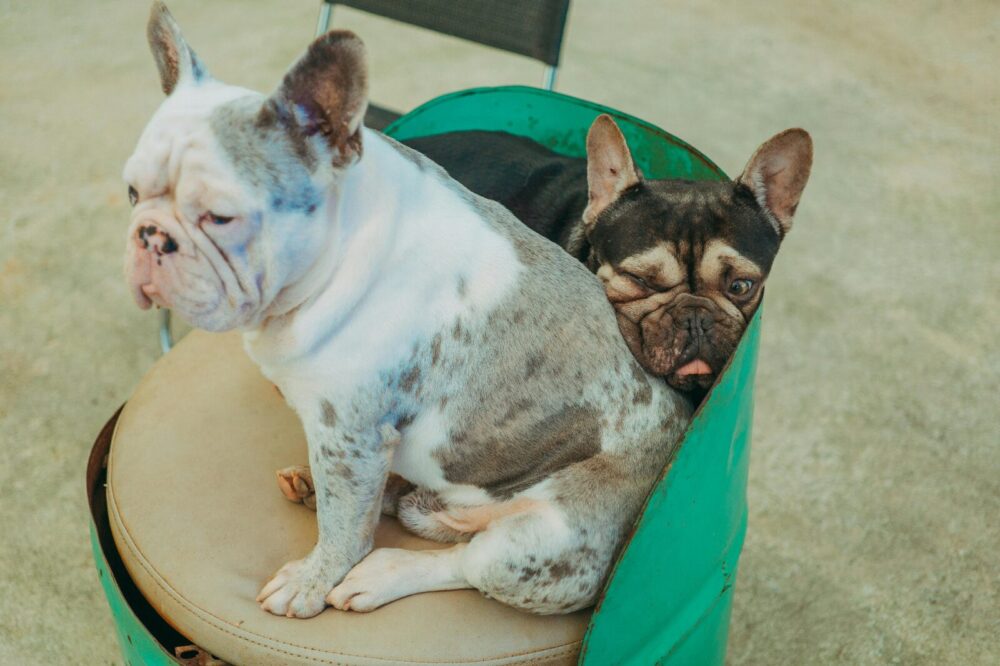
French Bulldogs are beloved for their charming nature and notable bat-like ears. Yet beyond their looks lies a fascinating spectrum of coat shades, from common brindles to rare colors like lilac and Isabella.
For new and prospective Frenchie owners, navigating this multicolored world requires insight into genetics, health considerations, and ethical breeding practices.
In this guide, we’ll explore ten rare French Bulldog colors, detailing what makes some hues more infrequent than others. We will also break down standard AKC-recognized shades and explain how coat types affect cost and care.
By the end, you’ll know exactly which French Bulldog color is right for you and how to navigate ethical breeding practices to ensure your future pup is a joyful, thriving addition to your family.
10 Rarest French Bulldog Colors
In French Bulldogs, some coat colors stand out for their singularity and exclusivity.
Below, we explore the ten rarest French Bulldog colors, their genetic challenges, pricing, and what makes them so special.
#1. Isabella French Bulldog

The Isabella French Bulldog has a diluted fawn coat with a soft blue-grey tint, often described as “lilac” or “lavender.” Their noses, paw pads, and eye rims are light, and they typically have striking light-colored eyes (blue, green, or amber).
Isabella is considered a unique French Bulldog color, since it is produced by a combination of recessive genes – specifically, the “dd” genotype (dilution gene) and “bb” (chocolate gene). Both parents must carry these genes to produce an Isabella puppy, making them extremely rare.
Average Price Range:
$6,000–$15,000+, with show-quality dogs reaching up to $50,000.
Health Considerations:
– Requires careful pairing of “ddbb” carriers.
– No direct health issues are linked to the color, but poor breeding can lead to skin sensitivities.
#2. Merle French Bulldog
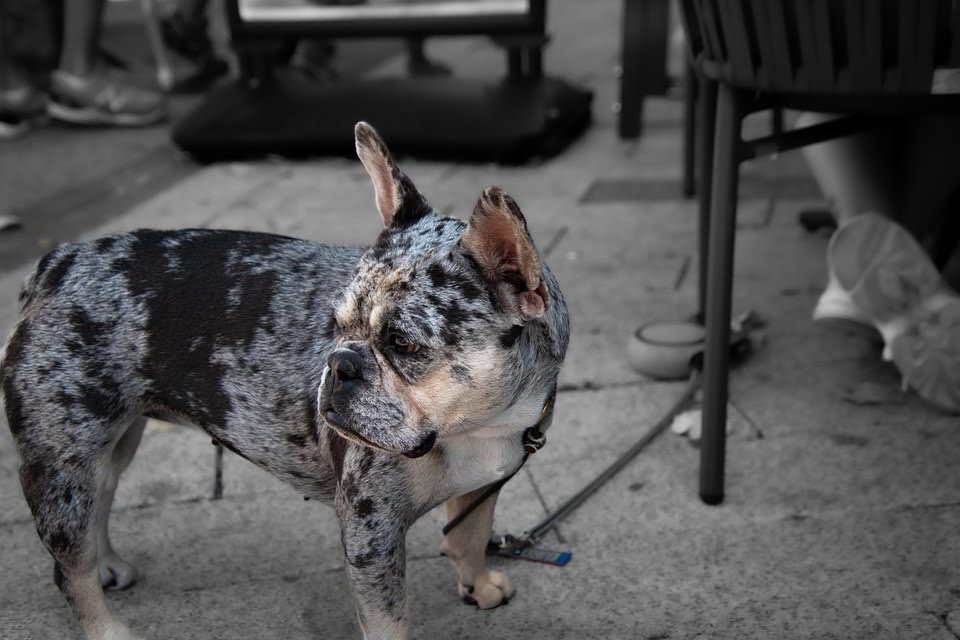
Merle Frenchies have a mottled or speckled coat with patches of darker color over a lighter base (e.g., black, blue, or chocolate Merle). Their eyes may be blue or heterochromatic (two different colors).
The Merle pattern is quite rare since it comes from a dominant “M” gene, but breeding two Merles together can produce double Merles, which often suffer from severe health issues (deafness, blindness). Responsible breeders avoid this, limiting their puppy supply.
Average Price Range:
$5,000–$20,000, with rare variations like Lilac Merle exceeding $30,000.
Health Considerations:
– Breeding two Merles comes with an extremely high risk of genetic defects.
– Some Merles are crossbred with Chihuahuas to introduce the gene, raising ethical debates.
#3. Lilac French Bulldog
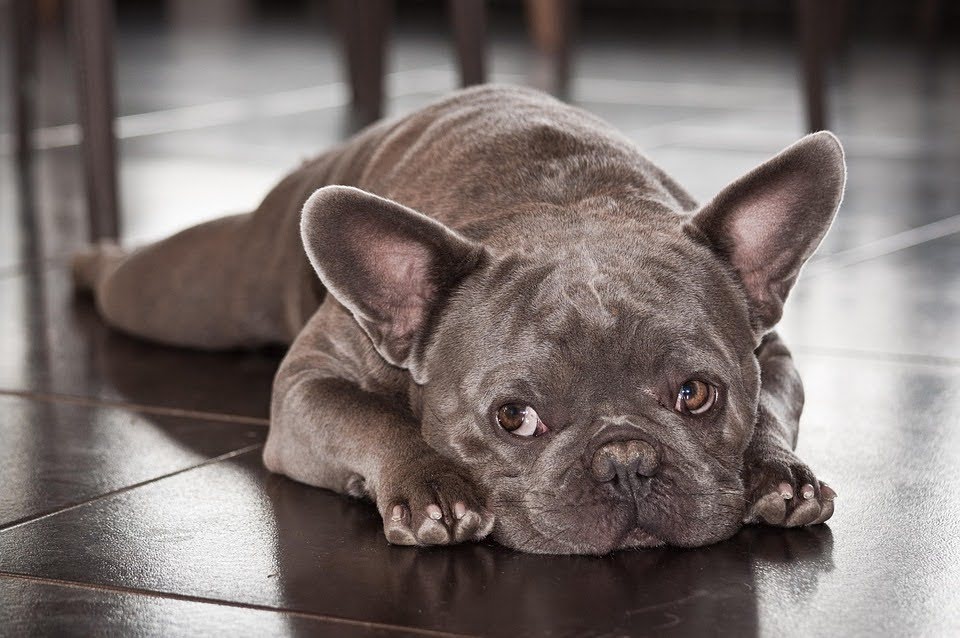
The Lilac French Bulldog boasts a particular coat that appears as a soft, muted gray with subtle lavender or purple undertones, a result of combined color dilution genes. Their nose, paw pads, eyeliner, and lips typically exhibit a light grayish-lavender hue, distinguishing them from blue or Isabella Frenchies.
Their eyes are often a mesmerizing shade of light blue, green, or amber, adding to their exotic appeal. Unlike standard colors, Lilac Frenchies maintain their distinct shade throughout their lives without significant darkening.
The Lilac coat is produced by the simultaneous presence of two recessive genetic mutations:
- Blue dilution gene (dd): Lightens black pigment to gray/blue.
- Cocoa gene (co/co): Modifies brown pigment to a cooler, diluted tone.
Average Price Range:
Lilac French Bulldogs are among the most expensive, typically ranging from $8,000 to $30,000, with elite bloodlines or rare variations (such as Lilac Merle or Fluffy Lilac) exceeding $50,000.
Health Considerations:
– Color Dilution Alopecia (CDA): Some Lilac Frenchies may develop thinning hair or bald patches due to weakened hair follicles from dilution genes.
– Lighter pigmentation makes them more prone to sunburn, allergies, and skin sensitivity.
– Reputable breeders conduct DNA testing to ensure healthy lineage and avoid double dilution (which can worsen skin/hair issues).
#4. Platinum French Bulldog
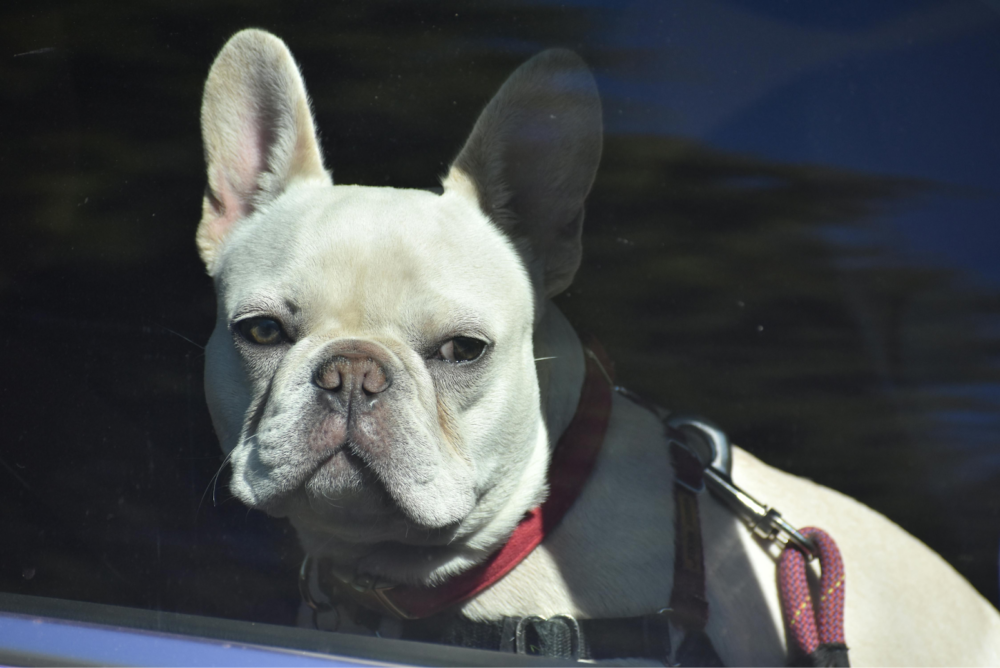
The Platinum French Bulldog is one of the rarest and most visually striking color variations, characterized by an ultra-light, nearly white coat with subtle creamy or silver undertones. Unlike albino dogs, Platinums retain some pigment, visible in their light gray nose, lips, and eye rims.
Their eyes can range from pale blue to green or even light brown, adding to their ethereal appearance. The coat often has a shimmering, metallic-like quality in certain lighting, which is how this variation earned its “Platinum” name.
Producing a true Platinum Frenchie requires a rare combination of four recessive genes:
- Recessive red (ee): Eliminates dark pigment, creating a cream/white base.
- Blue dilution (dd): Softens any remaining dark tones.
- Chocolate (bb) or cocoa (co/co): Further lightens the coat.
- Pied (sP): Some Platinums carry piebald genes, enhancing their light appearance.
Because so many genetic factors must align, Platinum Frenchies are exceptionally difficult to breed intentionally. Many breeders consider them a “happy accident” even in carefully planned litters.
Average Price Range:
Due to their rarity, Platinum French Bulldogs command premium prices, typically ranging from $10,000 to $40,000. Dogs with perfect symmetry, clear coats (no brindle traces), and rare eye colors can reach up to $60,000+ in high-demand markets.
Health Considerations:
– Their light pigmentation makes them prone to sunburn, requiring dog-safe sunscreen for outdoor activities.
– Some may experience skin dryness, allergies, or mild alopecia due to low melanin levels.
– While not as high-risk as double Merles, some ultra-light Platinums may have slight hearing or vision sensitivity.
– Reputable breeders avoid crossing two Platinums, as this may exacerbate health risks. DNA testing for the MITF gene (linked to deafness in white-coated dogs) is recommended.
Controversy and Demand:
Some breeders prioritize Platinum color over health in Platinum Frenchies, leading to breathing or skin issues. Responsible buyers should always request:
– Genetic health panels (including testing for DM, CDA, and patellar luxation).
– Proof of parentage (to avoid Merle or albino mixes mislabeled as Platinum).
– A health guarantee against congenital defects.
#5. Fluffy French Bulldog (Mixed with Rare Color)

Fluffy French Bulldogs, also known as “Long-Haired Frenchies,” break the breed standard with their soft, wavy, or slightly curly coats, most notably around their ears, neck, and tail.
While not an officially recognized variation, Fluffy Frenchies with rare coat colors (like Lilac, Blue, or Isabella) are exceptionally uncommon. Their fur is longer and silkier than the traditional short, smooth coat of standard Frenchies, giving them a distinctive, plush appearance.
The Fluffy trait stems from a recessive FGF5 gene mutation, which must be inherited from both parents. When combined with rare French Bulldog color genes (e.g., blue dilution or chocolate), the odds of producing a Fluffy Frenchie in a desired shade become astronomically low.
Average Price Range:
Fluffy Frenchies with rare colors typically cost $15,000–$50,000+, depending on the rarity of the coat color and lineage.
Health Considerations:
– Their longer coat requires regular brushing to prevent matting.
– Some breeders prioritize the Fluffy trait over health, leading to unethical practices. Buyers should ensure DNA testing for both coat and color genes.
– Many breeders consider these dogs “designer Frenchies,” as they require multiple generations of selective breeding.
Somewhere in our gallery of Frenchie pupies, a pair of bat ears perked up just for you. Come meet your life-long companion!
#6. Blue French Bulldog
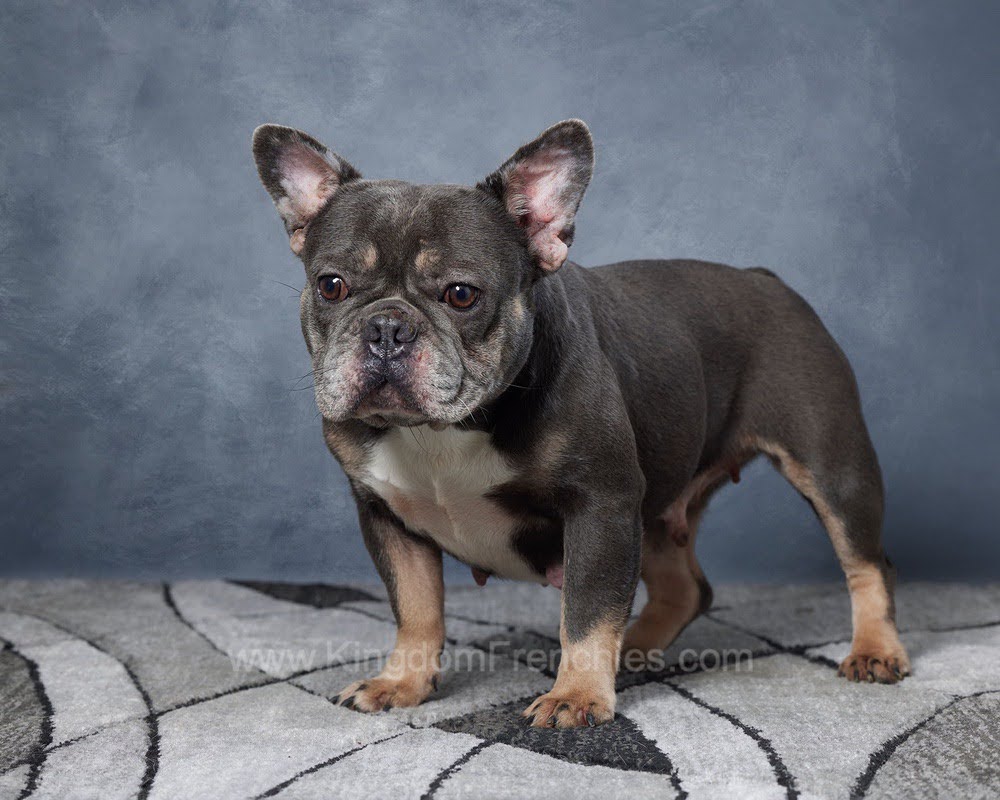
Blue French Bulldogs have a solid, steel-gray coat with a noticeable bluish sheen, often accompanied by a matching blue nose and light eyes (blue, green, or gold). Their coat is sleek and short, but the diluted pigment gives them a unique, almost metallic appearance.
The Blue coat is considered rare in French Bulldogs as it results from a dilution gene (dd) acting on a black base (KK or Kk). Since the gene is recessive, both parents must carry it to produce Blue offspring.
Average Price Range:
$5,000–$20,000, with higher prices for dogs with rare eye colors or premium bloodlines.
Health Considerations:
– Color Dilution Alopecia (CDA): A common issue causing hair thinning or bald patches.
– Blue Frenchies may be prone to different types of skin sensitivities, such as allergies and dryness.
#7. Chocolate French Bulldog
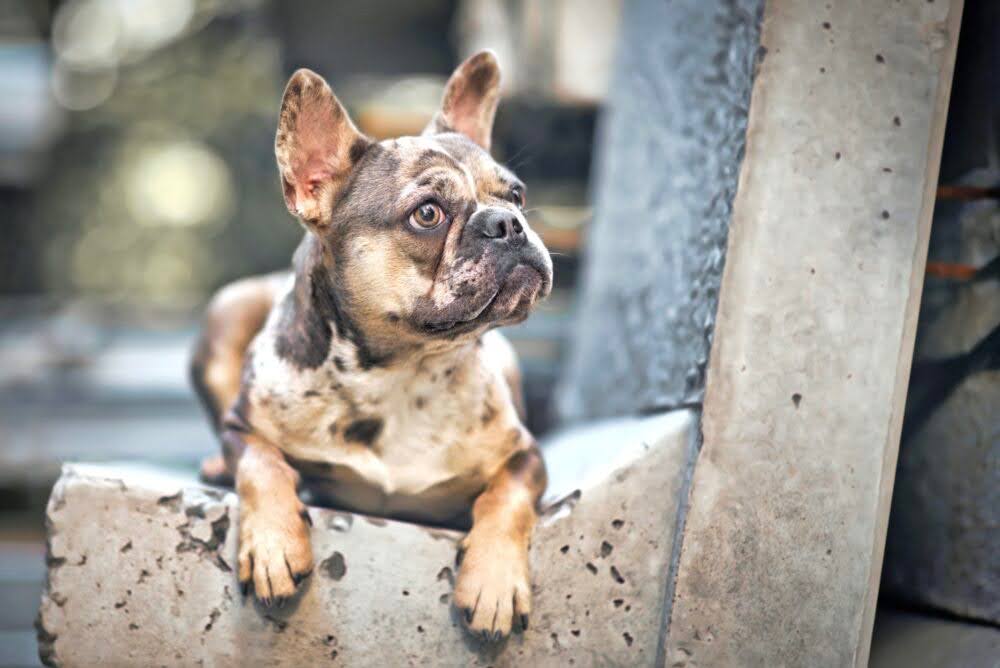
The Chocolate French Bulldog carries a luxurious, rich brown coat that ranges from warm milk chocolate to deep mahogany. This uniform coloration extends to their nose, eye rims, and paw pads, which all display the same chocolate hue.
Their eyes typically appear in striking shades of gold, green, or light brown, creating a beautiful contrast against their dark coat. The color remains vibrant throughout their life, though some fading may occur with sun exposure.
Chocolate Frenchies fall into the “rare color” category as they require two recessive “bb” genes, which modify black pigment to brown. Both parents must carry this gene to produce chocolate offspring, making intentional breeding challenging.
Average Price Range:
$6,000–$15,000, with rare variations (e.g., Chocolate Merle) reaching higher prices.
Health Considerations:
– Unlike diluted colors (blue/lilac), chocolates don’t carry the same risk of Color Dilution Alopecia
– Responsible breeders conduct genetic testing for the “b” allele while screening for common Frenchie health issues
#8. Black and Tan / Blue and Tan
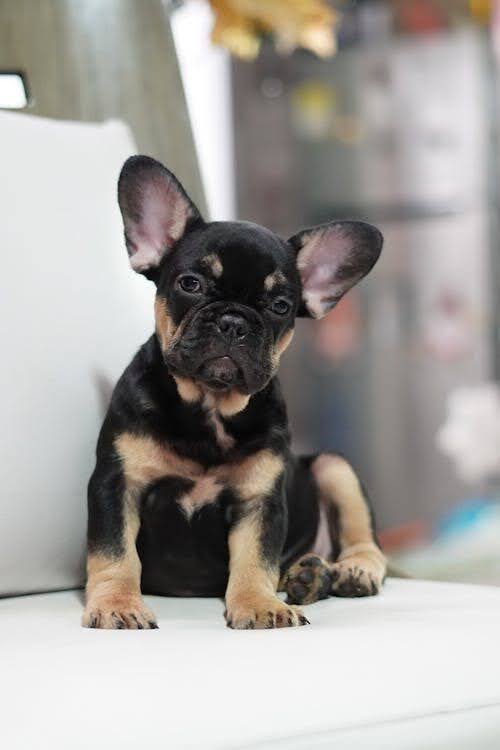
This rare French Bulldog color features a two-tone coat pattern with a dominant base color (black or blue) accented by rich tan markings above the eyes, on the cheeks, chest, legs, and under the tail.
Blue and Tan variants display the same pattern as Black and Tan, but with a diluted steel-gray base instead of black. Both varieties typically have dark noses (black or blue) and amber or green eyes that intensify their distinctive look.
The tan point pattern requires the recessive “at” gene, which must be inherited from both parents. When combined with either standard black (KK/Kk) or blue dilution (dd), the genetic complexity increases significantly. Blue and Tan Frenchies are particularly uncommon because they require both the tan point gene and the blue dilution gene to be present simultaneously.
Average Price Range:
– Black and Tan: $5,000–$15,000
– Blue and Tan: $8,000–$25,000
Health Considerations:
– Blue and Tan variants may develop Color Dilution Alopecia.
#9. New Shade Isabella
The New Shade Isabella Frenchie represents an ultra-rare variation of the classic Isabella, featuring an even more diluted coat with pronounced lavender undertones. Their fur appears as a pale, silvery taupe with a distinctive iridescent sheen in sunlight.
Like standard Isabellas, they have light noses (pinkish-gray) and striking blue, green, or gold eyes. The key difference lies in the intensity of the dilution, giving them an almost ethereal appearance compared to traditional Isabella Frenchies.
This color requires:
- The standard Isabella combination (dd + bb genes)
- An additional “cocoa” modifier (co/co) that further lightens the coat
- Often carries the “ee” recessive red gene for maximum dilution
Few breeders have successfully stabilized this genetic combination, making New Shade Isabella puppies exceptionally scarce. The New Shade Isabella represents the pinnacle of Frenchie color rarity, but their exclusivity demands extra vigilance regarding breeder ethics and health guarantees.
Average Price Range:
$15,000–$50,000+
Health Considerations:
– Extreme dilution may increase skin sensitivity and sunburn risk
– Requires meticulous genetic testing to avoid doubling up on health-risk genes
– Only recommended through breeders who conduct full health panels (including cardiac and joint screenings)
#10. Sable French Bulldog
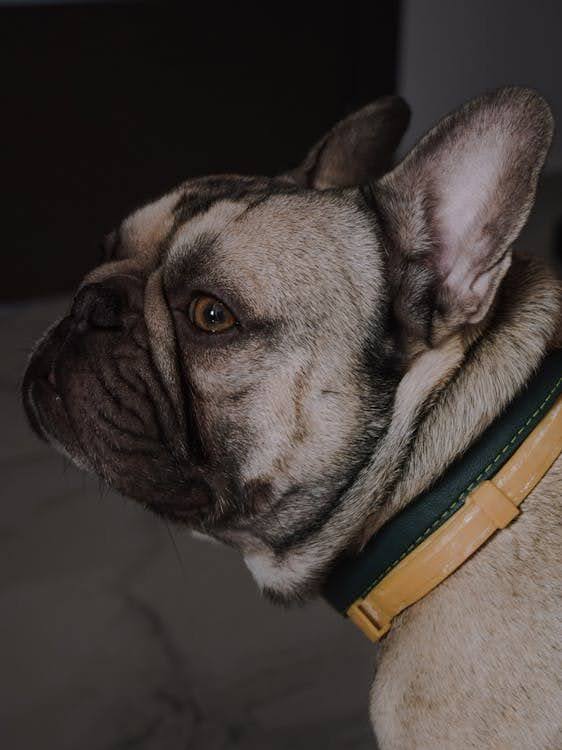
The Sable French Bulldog displays a striking fawn or tan base coat with distinctive black-tipped hairs, creating a subtle shaded or “smoky” effect. This multi-tonal appearance is most noticeable along the back, ears, and tail. Unlike standard fawn Frenchies, sables maintain a darker overlay that gives them a unique, sun-faded aesthetic. Their nose and eye rims are typically black.
The sable pattern stems from the genes at the A locus (the ay allele) and the K locus (usually ky/ky), which produce banded hairs with alternating light and dark pigments. True sables are a rare French Bulldog color because the gene is recessive and often overshadowed by dominant solid colors in breeding.
Average Price Range:
$5,000–$12,000, depending on lineage and shading intensity.
Health Considerations:
– No direct health risks are linked to the sable gene.
– Can be confused with “black masks” or dirty fawns. DNA testing confirms the ay allele.
6 Standard French Bulldog Colors
No matter how many rare French Bulldog colors exist, the breed’s standard coat shades remain timeless favorites. Recognized by kennel clubs worldwide, these classic hues represent the French Bulldog’s traditional look, with more affordability and fewer health concerns.
Below, we break down each standard color, its distinctive traits, and what makes them quintessentially Frenchie.
– Brindle: The most iconic Frenchie color, brindle features a striking mix of dark (black/brown) and light (fawn/gold) streaks, creating a tiger-stripe effect. This pattern is incredibly common: about 60% of Frenchies are brindle.
– Fawn: Ranging from pale tan to deep reddish-gold, fawn Frenchies have a solid coat with a black mask (unless carrying the “ee” gene). This color is the second most common Frenchie variation.
– Piebald: Piebald Frenchies boast a white base with well-defined patches of brindle, fawn, or black, covering at least 50% of their body. The piebald pattern occurs in about 20% of Frenchies.
– Cream: Cream Frenchies display a uniform, pale off-white or ivory coat, often with a black nose and dark eyes. Creams are less common than brindle or fawn.
– White: Pure white Frenchies lack any pigmentation patches, with pink or black noses and dark eyes. White Frenchies are rare among standards and should be tested for deafness, which is more prevalent in all-white dogs.
– Brindle and White: A brindle base with prominent white markings (chest, face, paws), this variation combines the classic brindle pattern with the piebald gene. The white portions should be clean-edged, not muddy or ticked.
A Frenchie’s love is one-of-a-kind, just like their coat. Let your perfect match find you in our gallery of French Bulldog puppies!
How Coat Color Affects Price
The price of a French Bulldog can vary dramatically based on coat color, with rare hues commanding premium prices. Several key factors influence this cost variation:
Rare French Bulldog colors like Isabella, Lilac, or Fluffy require specific recessive gene combinations, making them harder to produce. Breeders often invest in genetic testing and selective pairings, increasing expenses. For example, a standard Brindle Frenchie may cost $3,000–$5,000, while a Lilac can exceed $20,000 due to its genetic complexity.
Responsible breeders charge more but typically provide a puppy health guarantee, vaccinations and deworming, AKC registration (even for non-standard colors), microchipping, and starter kits (food/blanket).
While a rare-colored Frenchie can be a stunning companion, prioritize breeders who invest in health over hype. A lower upfront cost for a standard color may save thousands in potential vet bills, and ethically, it helps discourage irresponsible color-focused breeding practices.
Health Considerations for Rare Colors
When buying a rare-colored French Bulldog, potential owners must prioritize health over aesthetics. Many rare colors, such as Merle, Lilac, and Isabella, are linked to genetic health risks.
For example, Color Dilution Alopecia (CDA), a condition causing hair loss and skin irritation, is common in dogs with diluted coats (Blue, Lilac). Similarly, double Merle breeding (mating two Merle dogs) can result in puppies with blindness, deafness, or other severe defects. Even if a rare-colored Frenchie appears healthy initially, underlying issues may develop later, leading to costly vet bills and emotional strain.
Another concern is increased skin sensitivity. Light-pigmented Frenchies (Platinum, Isabella) are prone to sunburn and allergies, requiring special skincare routines. Additionally, some breeders may prioritize rare colors over structural health, leading to exacerbated brachycephalic syndrome (breathing difficulties) or joint problems.
Breeding Challenges of Rare Colors
Breeding rare-colored French Bulldogs presents significant genetic, ethical, and health challenges that both breeders and buyers must understand. The pursuit of unique coat colors often requires complex pairings of recessive genes, which can lead to unintended consequences if not managed responsibly.
Creating colors like Lilac, Isabella, or Merle demands precise combinations of recessive genes. Even with DNA testing, predicting outcomes is difficult, and only a small percentage of puppies in a litter may inherit the desired color, while others might be born with standard coats or hidden health defects.
Worse, some breeders attempt to shortcut the process by:
– Inbreeding closely related dogs to increase the chance of recessive traits, which amplifies genetic disorders (e.g., spinal issues, heart defects).
– Double Merle breeding (mating two Merles) has a 25% chance per puppy of producing deaf, blind, or developmentally impaired offspring.
– Overusing popular sires leads to a lack of genetic diversity and higher rates of hereditary diseases in the breed long term.
Even then, only a fraction of the litter may display the desired color, making the process costly and time-consuming. Some breeders resort to inbreeding or “color mills” to increase odds, which raises the risk of hereditary diseases and poor temperament.
While rare colors are beautiful, irresponsible breeding can devastate the breed’s health. Potential Frenchie owners must research thoroughly and support only those breeders who prioritize healthy dogs over profit.
Frequently Asked Questions
Why are some French Bulldog colors more expensive than others?
Rare colors like Isabella or Lilac require specific recessive genes, making them harder to breed. Their exclusivity, high demand, and costly genetic testing drive prices up. Breeders invest years and thousands into pairing the right dogs, with only a few puppies per litter inheriting the desired color.
Are rare-colored French Bulldogs recognized by the AKC?
Most of the rare colors are not AKC-recognized for conformation shows. They can still be registered as “non-standard,” but breeders focusing on show lines avoid them.
Do rare-colored Frenchies have more health problems?
Yes, some rare Frenchie colors are linked to genetic health risks. Diluted coats (Blue/Lilac) may develop Color Dilution Alopecia, while Merle carriers risk hearing/vision issues. Responsible breeders DNA test parents to minimize risks.
Can I register a rare-colored Frenchie?
Yes, they can be registered, but only as “non-standard” with the AKC. Registration doesn’t require color approval, but unethical breeders may falsify documents. Always verify pedigrees with genetic testing.
Are rare-colored French Bulldogs harder to care for?
Some rare French Bulldog colors require extra care due to skin/sensitivity issues. Light-pigmented dogs (Platinum, Isabella) need sunscreen, while Fluffy types need grooming. All Frenchies require routine vet checks; rare colors just have added considerations.
Conclusion
Rare French Bulldog colors are undeniably stunning—but beauty shouldn’t come at the cost of health. Always prioritize reputable breeders who focus on well-being, not just appearance, to ensure your Frenchie lives a happy, healthy life.
